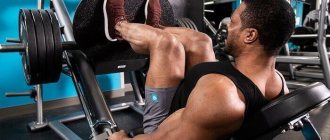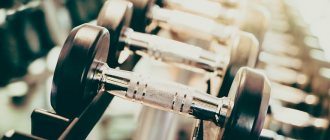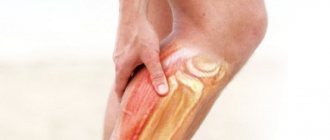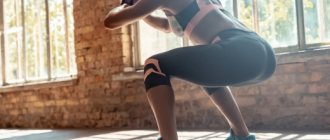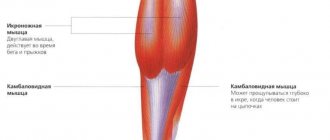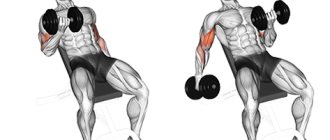23.08.2018
About the kids
German Elena Nikolaevna
Child and adolescent growth is a reflection of overall health and well-being. This is a genetically programmed process that manifests itself in an increase in the linear dimensions of the body and its organs. It is of a stepwise nature: periods of acceleration are followed by periods of decreased rates, and the rates of linear and volumetric growth of the entire body and its parts do not coincide in time.
How does a child grow and what are growing pains? At what age do they occur and why? In what cases is a doctor’s help necessary and what does it consist of? Osteopathic doctor Elena Vladimirovna German answers these and other questions.
How does a child grow and what are growing pains?
The highest growth rate is observed in the womb, then it gradually decreases after birth until puberty, and then increases sharply again.
Close attention is paid to the growth of the newborn, which is explained by the importance of this parameter in the overall assessment of development. In the first year of life, a child usually grows by about 25 cm. Between the ages of 1 and 4 years, children grow at a rate of about 10 cm per year, reaching 100 cm by the age of 4 (“meter-high”, i.e. height 1 m, weight - approximately 16 kg). Subsequently, growth slows down somewhat (approximate growth rate of 5 cm per year) until puberty. The pubertal period is characterized by a growth spurt (10–15 cm per year) and is caused by the influence of the pituitary somatotropic hormone (GH), as well as an increase in the production of sex hormones (androgens and estrogens).
Important hormonal regulators of growth are somatotropic hormone, insulin-like growth factor 1, sex steroids and thyroid hormones. Interestingly, decreased insulin levels or existing insulin resistance during adolescence negatively affect growth. The greatest interest is caused by peptides that have hormonal-like effects, synthesized in the body (growth factors). Relationships with the corresponding receptors trigger cascades of cell signaling reactions that selectively regulate gene activity. More and more new growth factors are being discovered, and information about their properties is growing very quickly. Growth will continue as long as the epiphyseal growth plates are preserved. Sex hormones (estrogen, testosterone) cause closure of the epiphyseal growth plates in late adolescence. The cartilage is completely replaced by bone and natural growth stops.
The final height a person achieves depends on the size of the long bones (tibia and femur). Androgens promote the closure of the epiphyseal growth plates and thus stop growth.
Growing pains are not recognized by all doctors; they are not considered as a diagnosis and represent clinically insignificant pain in the legs.
Uncle, get the sparrow!
So, let’s take the situation into our own hands and start with this:
- We check the child's hormones. The hormone somatotropin is responsible for growth. You can notice its deficiency by the time the baby turns 2 years old. In this case, you need to see an endocrinologist.
- We follow the daily routine. They grow in a dream - it's true.
- Firstly, the child gains energy for all his great achievements and there should be enough energy to be enough for the growth of the body.
- Secondly, somatotropin is produced only at night. But the production of the hormone is affected by sleep conditions: you need to go to bed before midnight, no later than 2-3 hours, the room should be dark and ventilated (ideally, it is better to open the window all night), and an hour before bed you need to put all gadgets aside and spend time quietly: read, draw, chat with your family.
How do growing pains manifest themselves?
Children describe growing pains as aching, tense pain in the leg muscles above or below the knee, sometimes below the knee (pain is usually limited to the knee and/or lower leg area). As a rule, both legs are bothered. Some children complain of abdominal pain or headaches during these episodes. It should be noted that these are intermittent pains that usually occur in the evening or at night; sometimes the child may unexpectedly wake up at night during deep sleep and complain of pain in the leg. Growing pains never appear during the daytime. If these are growing pains, then regardless of the severity of the pain attack at night, the child always feels well in the morning.
Let's take a closer look at physical exercises.
To ensure that you don’t have to wait long for results, buy your child something from this list:
- Swedish wall;
- ropes;
- rings;
- stairs;
- horizontal bar or other sports play equipment
After a light warm-up run (5-7 minutes), set aside 15-20 minutes for stretching and flexibility exercises. These are bends, swings, bridges, splits. This includes hanging on the bar, first without weights, then one with a weight of 5-10 kg tied to the legs. Jumping, climbing a hill, alternating tension and relaxation, repeat 3-4 times.
The most decisive challenge for increasing height is exercise equipment. In the online store ROMANA.RU
There is a huge selection of home exercise equipment with a full description of the recommended exercises. The most effective exercises are those based on the laws of physiology. Berlin orthopedic professor Julius Wolff states that when exposed to bone tissue under certain conditions, it can actually cause its restructuring. Unique results can be achieved by exercising on exercise machines to strengthen the muscular-ligamentous frame, deeply stimulate open growth zones, diagonal, lateral and direct stretching of the spine.
You should never despair or get upset if you don’t quite succeed the first time. With the help of nutrition, adherence to a sleep schedule, physical education and sports, sets of exercises on simulators, you can find those exercises with the help of which the shoulder joints will open and long-awaited centimeters will be added!
Why do they arise?
The causes of growing pains are not reliably known. The best explanation for the mechanism of growing pains is the tension of the muscles and tendons as the leg bones rapidly increase in length. There are several ways to predict the approximate final height of children. The simplest method is used to calculate the final height of healthy children who have a “bone” age corresponding to or close to the “passport age”. Since there is a high positive correlation between the height of children and parents, formulas have been proposed for calculating the height of children depending on the height of parents.
approximate final height = (father's height (cm) + mother's height (cm)) + 6.5 cm.
2
Approximate
the girl’s final height = (father’s height (cm) + mother’s height (cm)) – 6.5 cm.
2
It is believed that a child is active during the day, and the information that his brain receives from tense muscles and tendons is lost in the flow of information from many other events. At night, when the child falls asleep and there are no distractions, pain impulses that come from tense muscles and tendons reach higher nerve centers and the child wakes up in pain. Therefore, this condition is observed during the period of the child’s most intensive growth and after high physical activity.
Magic drops
Such children need treatment with growth hormone. GH, which is synthesized using a genetic engineering method, is identical to natural one and has virtually no side effects. Only a specialist can prescribe growth hormone after examination. Treatment lasts several years until the growth zones close (this is determined using an x-ray of the hands) and the growth effect ceases. GH is administered daily using a special syringe pen, the design of which allows not to lose a single drop of the precious drug.
GH deficiency is often combined with other endocrine pathology: dysfunction of the thyroid gland, adrenal glands, gonads, so treatment should be carried out under the constant supervision of an endocrinologist.
GH drugs are very expensive, a course of treatment for a month costs a thousand dollars, but Russian children are treated with GH drugs for free. What are the results? In the first year of treatment, it is possible to achieve an increase in height by 8–12 cm, in the second – by 6–8, and in the third – by 4–6. In the first two years, the body is saturated with the hormone, then growth rates become the same as in healthy children. The earlier treatment is started, the more effective it is. Moscow endocrinologists have a patient whose height is now ninety-five meters, although without treatment he would not have grown above one and a half meters.
With familial short stature, the effect of using GH drugs is lower than with growth hormone deficiency; they need to be administered in larger quantities. In this case, you can increase your height by only 6–8 cm. If the parents’ height does not exceed 150–160 cm, the children’s height will be approximately the same.
Parents often ask doctors whether the second child will also grow poorly if the first child has a growth hormone deficiency? No, the second one can be born absolutely healthy, but before planning a pregnancy, you need to seek medical genetic consultation.
When should you see a doctor?
Most children do not need to see a doctor. Typically, active growth in children forces parents to consult a doctor in cases of accompanying symptoms such as fatigue, frequent illnesses, poor posture, etc. In their absence, accelerated growth is rarely a cause for concern. However, you should consult a doctor if:
- pain occurs in the morning and/or during the day; pain is prolonged, lasting for a long time;
- the pain is so intense that it interferes with your child's normal activities;
- the child complains of pain in the joints;
- discomfort and pain appeared after injury;
- pain is accompanied by signs and symptoms such as: swelling, redness, any change in the skin in the painful area, skin rash, increased fatigue, loss of appetite, fever.
What is important to know?
There are two most common conditions in childhood and adolescence that require a differential diagnostic search. These are Sever's disease and Osgood Schlatter's disease.
Calcaneal epiphysitis (Sever's disease) is a condition characterized by pain in the heel as a result of separation of the apophysis of the calcaneus from its body before ossification is complete. There are two ossification centers in the calcaneus: one of them is activated immediately after birth, the other is usually not earlier than 8 years. Completion of ossification is usually observed by the age of 15 years. Violation of the integrity of the cartilage with calcaneal epiphysitis can be the result of a strong traction force directed at the apophysis during contraction or shortening of the calcaneal muscles. Spasmodic bone growth without adaptive lengthening of the calf muscles may play a role. Pain occurs in patients (usually 9–14 years of age) with a history of athletic activity, especially in those who have used shoes without a heel lift (such as marathon shoes or cleats); pain is localized at the edges of the heel and intensifies when standing on tiptoes or running. Sometimes there is an increase in local temperature or swelling.
The diagnosis is made clinically. Treatment consists of heel pads and orthoses or a plaster cast.
Osgood-Schlatter disease is osteochondrosis of the tibial tuberosity. Occurs between the ages of 10 and 15 years and is usually unilateral. Osgood-Schlatter disease is one of the most common causes of knee pain in adolescents. Although the disease is more common among boys, this status is changing as... girls are becoming more active in sports. The etiology is believed to be traumatic due to excessive traction of the patella on the immature epiphyseal inserts, resulting in microburst fractures. Characteristic symptoms are pain, swelling and tenderness over the tibial tuberosity at the insertion of the patellar tendon. There are no systemic violations.
The diagnosis is made clinically, and sometimes radiography may be required. Lateral X-rays of the knee may show fragmentation of the tibial tuberosity. However, the need for an x-ray examination arises when there are concomitant disorders (for example, trauma, arthritis) that manifest themselves in the form of pain and swelling that extend beyond the area of the tibial tuberosity or the pain is accompanied by redness and increased local temperature. The doctor selects the treatment. Treatment is usually symptomatic (analgesics, rest, rarely immobilization, corticosteroid injections and surgery)
